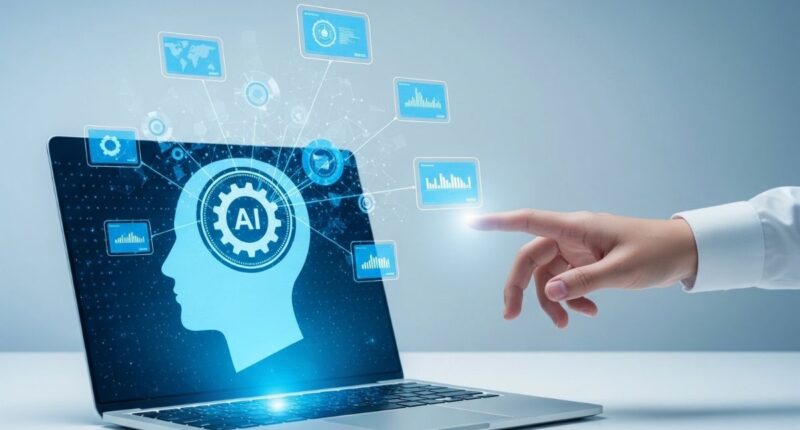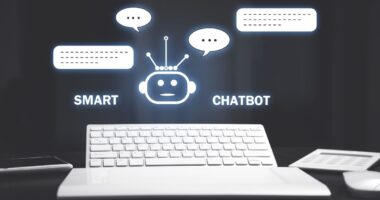By 2026, Generative AI will be firmly entrenched in the everyday workings of large enterprises. At the same time, millions of us rely on it to research, learn, create content, and sometimes even just be friends.
What started with ChatGPT in 2023 has now permeated every corner of life, and the pace is only going to accelerate.
Sure, there are still challenges like copyright, bias, and the risk of job loss. But from enhancing human productivity to accelerating learning, the benefits of machines that can generate words, images, videos, and code are so great that no one can ignore them.
Over the next 12 months, we will undoubtedly see Generative AI become more integrated into our daily lives as new tools emerge. So here are 10 trends I think will be the most important in 2026.
1. The Age of Generative Video
Generative AI was used extensively this year in Netflix’s Argentinian series “El Eternauta.” The producers say the technology has significantly reduced production time and costs compared to traditional animation and special effects techniques.
Generative AI is expected to become a major player in the entertainment industry by 2026, as we see it powering big-budget TV series and Hollywood’s biggest film festivals.
2. Authentic Voice Amidst the AI Tide
As the ocean of generative AI-generated content grows, individuals and brands will find new ways to express authenticity and real human experiences.
While audiences will continue to find AI useful for delivering information quickly and creating content, only creators who can harness real human qualities that machines can’t match will rise above the tide of what is simply called “AI trash.”
3. Copyright Conundrum: The Crisis Is Getting Worse
Controversies over the use of copyrighted material to train generative AI systems and the fair compensation of human creators will intensify throughout 2026.
AI creators need human-created material to help their machines learn from. At the same time, many artists, musicians, writers, and filmmakers view such use of their work as nothing more than theft.
Expect more lawsuits and intense public debates over the coming year. As lawmakers struggle to strike a balance between allowing technological innovation and respecting intellectual property rights, we may see some attempts to address this situation through regulation.
4. The Rise of Agentic Chatbots: From Response to Leadership
Chatbots are no longer simply content creators who provide information or respond to questions. As they adopt more agentic qualities, they will become more capable of working autonomously towards long-term goals.
This year, ChatGPT introduced Agent Mode, and other tools like Gemini and Claude have added the ability to communicate with external apps and perform multi-level tasks without human intervention.
By 2026, as the Agentic Revolution gathers momentum, Generative AI tools will have made the leap from smart chatbots to assistants who actually get the job done.
5. Privacy-centric Generative AI
As businesses invest more in generative AI, concerns about privacy and the need to protect personal and customer data will grow.
This will drive interest in privacy-centric AI systems that process data on-premises or directly on users’ own devices.
For example, Apple is differentiating itself by prioritizing privacy, and I expect other AI device manufacturers and developers to follow suit in 2026.
6. Generative AI in Gaming
Gaming could be one of the most exciting areas for generative AI in 2026. Game developers are creating games that have emergent narratives that can adapt to the actions of the player.
Even if the player does something completely unexpected, the story will continue.
Game characters will no longer follow a set script. They will be able to react, talk, and act like real people.
These changes will create richer, more immersive, and interactive experiences for players. They will also reduce production costs and open up new creative options for game studios.
7. Synthetic Data for Analysis and Simulation
Generative AI is increasingly being used not only to generate words and images, but also to create raw data needed to understand the real world, simulate physical, mechanical, and biological systems, and train other AI systems.
This approach allows banks to design fraud detection systems without revealing the true nature of their customers. Healthcare providers can also simulate treatments and drug trials without compromising patient privacy.
As the demand for synthetic training data increases, this data will become the main power for advanced analytics and automated decision-making systems in 2026 and beyond.
8. Monetization of Generative Search
Generative AI is changing the way we search for information online. It’s disrupting businesses that rely on search results to make money, and it’s forcing ad services like Google and Microsoft Bing to rethink how they monetize.
We can expect to see efforts to address this problem in 2026. Services like Google’s Search Generative Experience (SGE) and Perplexity AI will attempt to bridge the gap between generative search (search powered by AI) and paid search advertising.
9. Further advances in scientific research
This year, we saw how generative AI can be a valuable tool for scientific research. It has driven major advances in areas such as drug discovery, protein folding, energy production, and astronomy.
This trend will accelerate even further in 2026. Researchers will increasingly use generative models to find solutions to humanity’s biggest problems, such as curing diseases, combating climate change, and solving food and water shortages.
10. Proving the Value of Generative AI Jobs
While there has been much talk of jobs disappearing, by 2026 the focus will shift to the new roles that AI will create.
We will start to see a real demand for people with the skills to fill roles like “Prompt Engineer”, “Model Trainer”, “Output Auditor” and “AI Ethicist”.
People who can integrate the work of human organizations and AI agents will be in high demand.
As we continue to see the benefits of AI, we will also be able to more clearly understand how valuable they are in mitigating the potential harms.
The Bottom Line
Generative AI is no longer an experimental technology that can be set aside. It is now a key engine driving massive change in every industry and in everyday life.
Also Read: Cash Flow Analysis Basics: Business Owner Should Know
The trends we will see in 2026 point to a future where the boundaries between human creativity, business performance, and intelligence and machine capabilities will become increasingly blurred.
As this next phase of AI unfolds, only organizations that can adapt quickly, invest in the right skills, and embrace responsible innovation will thrive.








